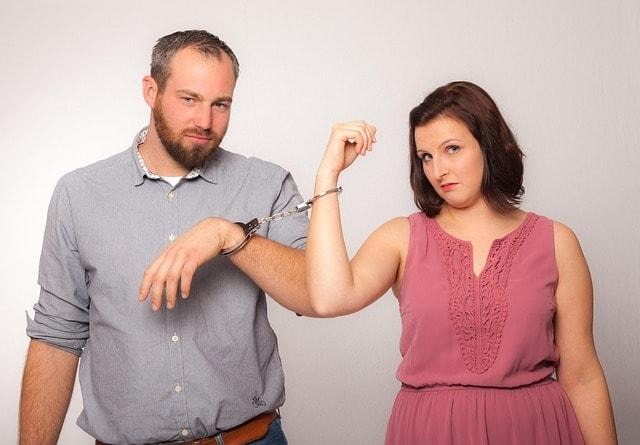CA Divorce Rate: Understanding the Golden State’s Changing Marriage Landscape

I spend a lot of time inside California family law, reading files, sitting in courtrooms, and helping clients make sense of what’s next. One thing I remind folks right away: our divorce story in California isn’t what most people think. Yes, divorces happen every day from Los Angeles to San Francisco to San Diego. But the broader trend? It’s more nuanced—and, frankly, less dramatic, than the myths.
The Shifting Numbers (and what they actually mean)
You’ve heard the line that “half of all marriages end in divorce.” It lingers like an urban legend. The reality I see, and what statewide patterns reflect, is a downward trend in divorces. California generally tracks close to (and sometimes below) national rates. That doesn’t mean relationships are suddenly easy. It means who marries, when they marry, and why they marry has changed.
People are marrying later, with more financial stability and clearer expectations. Fewer early marriages means fewer quick dissolutions. Cohabitation has grown. And when couples do marry, it’s often with more intention – so the marriages that happen tend to be sturdier.
Why divorce rates are declining (from the files to the data)

Here’s the pattern I see in real cases and in the research backdrop:
- Later marriages = stronger foundations. By the time many couples say “I do,” they’ve handled school, early career chaos, and some financial milestones.
- Fewer marriages overall. More couples cohabitate or delay marriage. Fewer weddings naturally mean fewer divorces.
- Diversity in family structure. Same-sex marriages and a variety of modern family arrangements broaden the landscape, not every long-term partnership is measured by a marriage certificate.
Why marriages still break down (the recurring themes)
Even with fewer divorces, the reasons that push a marriage to the brink haven’t changed much:
- Financial strain. California’s cost of living can test even strong partnerships.
- Substance abuse. Addiction erodes trust, safety, and stability.
- Domestic violence. Divorce, in these cases, is about safety and dignity, full stop.
- Expectations vs. reality. When partners grow in different directions, “irreconcilable differences” isn’t a cliché, it’s a legal recognition of a real split.
- Career pressure. Long hours and travel pull energy away from the relationship if there’s no plan to protect it.
The demographic lens (how risk shifts by life stage)
In plain terms: age at marriage, education, and income matter. Earlier marriages face higher risk. Education and stable income correlate with lower divorce likelihood. That doesn’t predict any one couple’s future – it’s context, not destiny – but it helps explain statewide trends.
Regional realities across California
Los Angeles, Orange County, San Diego, San Francisco – each tells its own story. Courts run differently, local economies pull families in unique ways, and community norms shape how (and how fast) cases resolve. I advise clients to think county-by-county for timelines and culture, even though the law is statewide.
How the process actually works here (quick primer)
California is no-fault. You don’t have to prove wrongdoing; you have to disclose fully and resolve three big buckets:
- Property: We’re a community property state – most assets and debts acquired during marriage are divided equally unless there’s a valid agreement.
- Support: Temporary and longer-term spousal support depend on need, ability to pay, and statutory factors.
- Kids: Custody and parenting plans turn on the best interests of the child; mediation resolves most disputes before trial.
My job in this phase is part translator, part strategist: organize disclosures, reality-check expectations, and move the case toward a durable agreement – or prepare cleanly for court if settlement isn’t possible.
The role of counsel (and why it matters)
A seasoned family law attorney is more than a litigator, they’re a project manager for one of the most complex transitions you’ll ever make. Negotiation, drafting, timelines, temporary orders, trial prep if needed, it’s a lot. Good counsel protects your rights and your peace of mind.
Prenups: prevention, not pessimism
I see more couples, especially with businesses, property, or second marriages – use prenuptial agreements to reduce future conflict. Done right, a prenup clarifies expectations and protects both parties. It’s not anti-marriage; it’s pro-clarity.
Fewer marriages, fewer divorces… and more choice
The biggest driver behind the numbers is simple: delayed or declined marriage. That shift doesn’t make divorce painless for those going through it, but it explains why the statewide rate looks calmer than the headlines.
The impact on families (what I tell clients)
Divorce is not just a legal event, it’s emotional triage and financial re-engineering. Kids need stability and honest communication. Parents need a plan and a support system. Courts handle the orders; families handle the healing. Therapy, support groups, and smart financial planning blunt the hardest edges of this transition.
If you’re at the beginning of this road, here’s my short checklist
- Get oriented early. A consult now saves money and stress later.
- Organize financials. Taxes, statements, paystubs, titles, it’s the fuel for fair outcomes.
- Decide on your process. Mediation, collaborative, or litigation – pick the path that fits the case, not the rumor mill.
- Protect the kids’ routines. Courts notice who prioritizes stability.
- Think long-term, not just “win today.” Durable agreements outlast courtroom victories.
Bottom line
California’s divorce rate isn’t a story of failure, it’s a story of change. We marry later; some don’t marry at all. Those who do are often more prepared, so fewer marriages end. But for the couples who are ending a marriage today, the statistics don’t lessen the weight of the moment. What does help is clarity about the law, a plan for the process, and support that respects both the emotional and practical sides of this transition.













